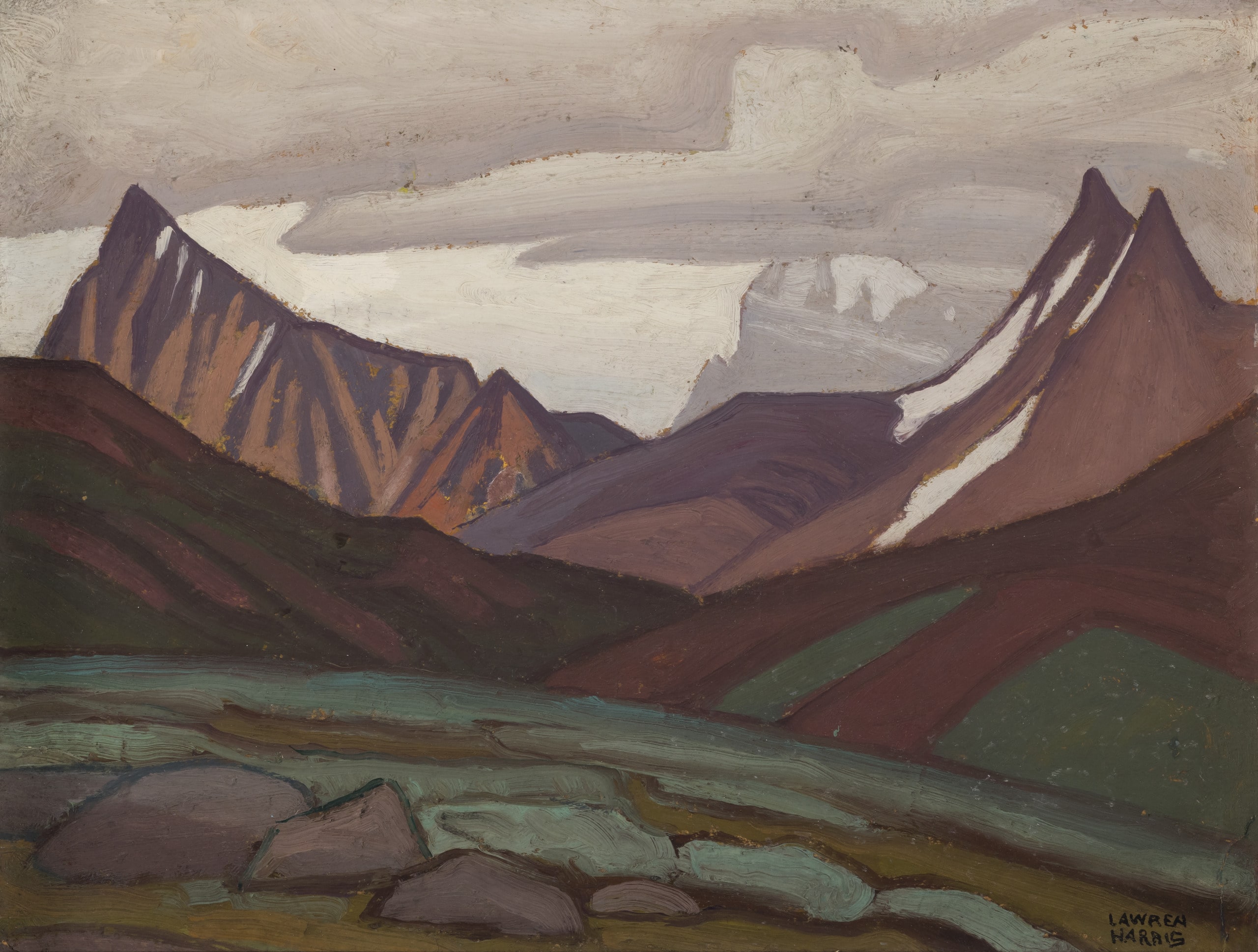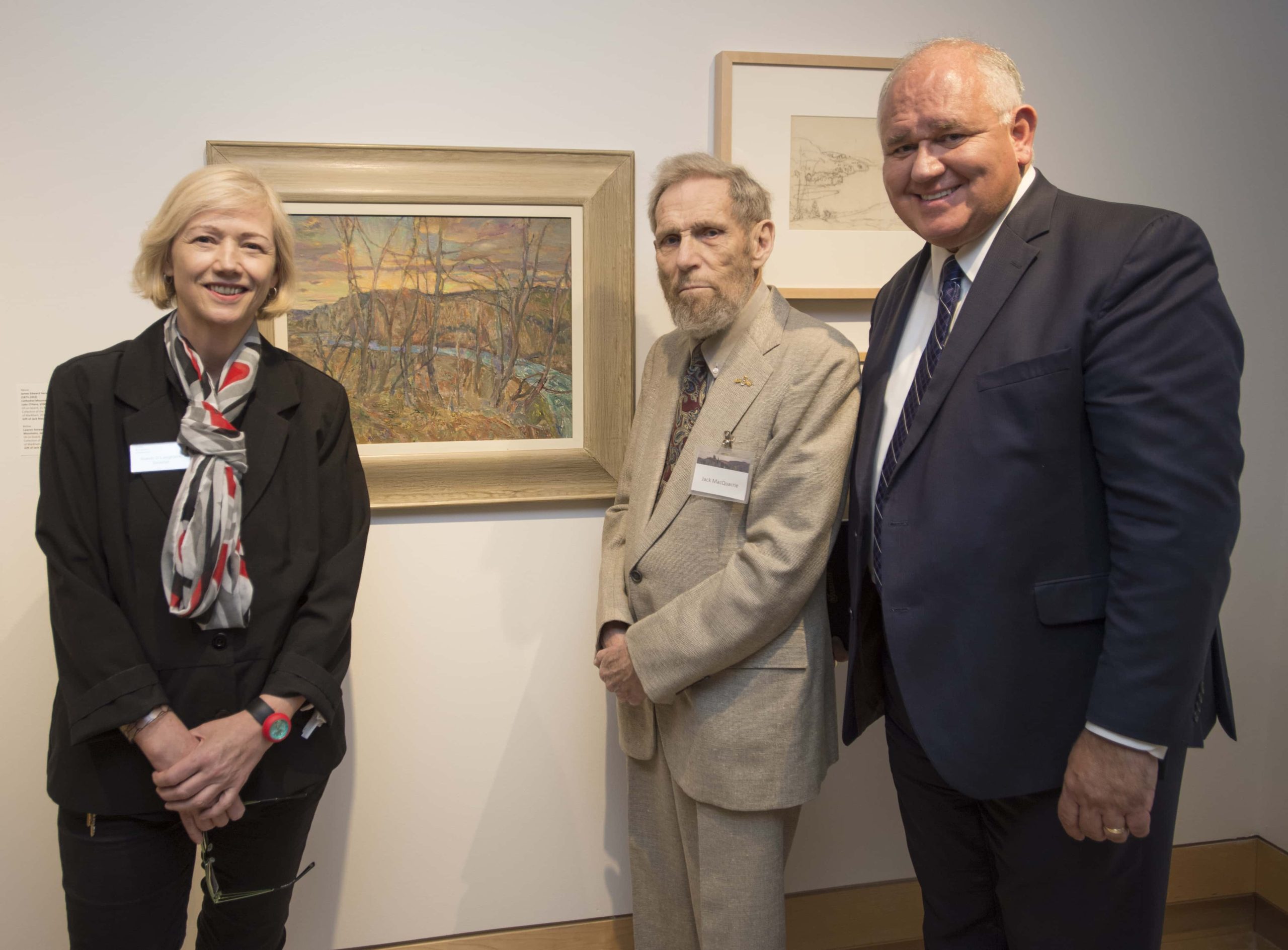History of the Collection
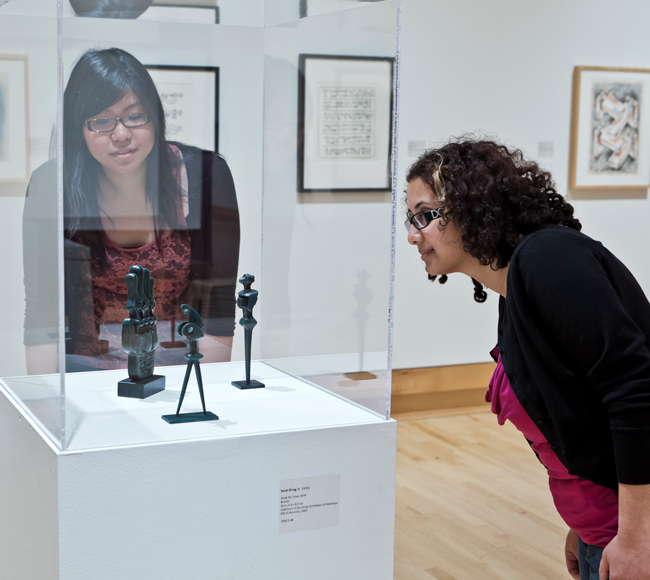
A Brief History of the Varley Art Gallery and Its Collections
The Varley Art Gallery of Markham celebrated its twenty-fifth anniversary in 2022. While its exhibition program and collecting practices have shifted significantly since opening in 1997, the gallery’s fundamental mission and activities have remained remarkably consistent with the original goals of its founders. The gallery’s vision is to be a vital cultural hub for artists and diverse communities, creating critical conversations about art and society. As a municipal gallery, we inspire local and national audiences to engage with art. And, of course, we share and celebrate the life and work of F. H. Varley, a founding member of the Group of Seven and the artist for whom the gallery is named. How did this dynamic institution come into being?
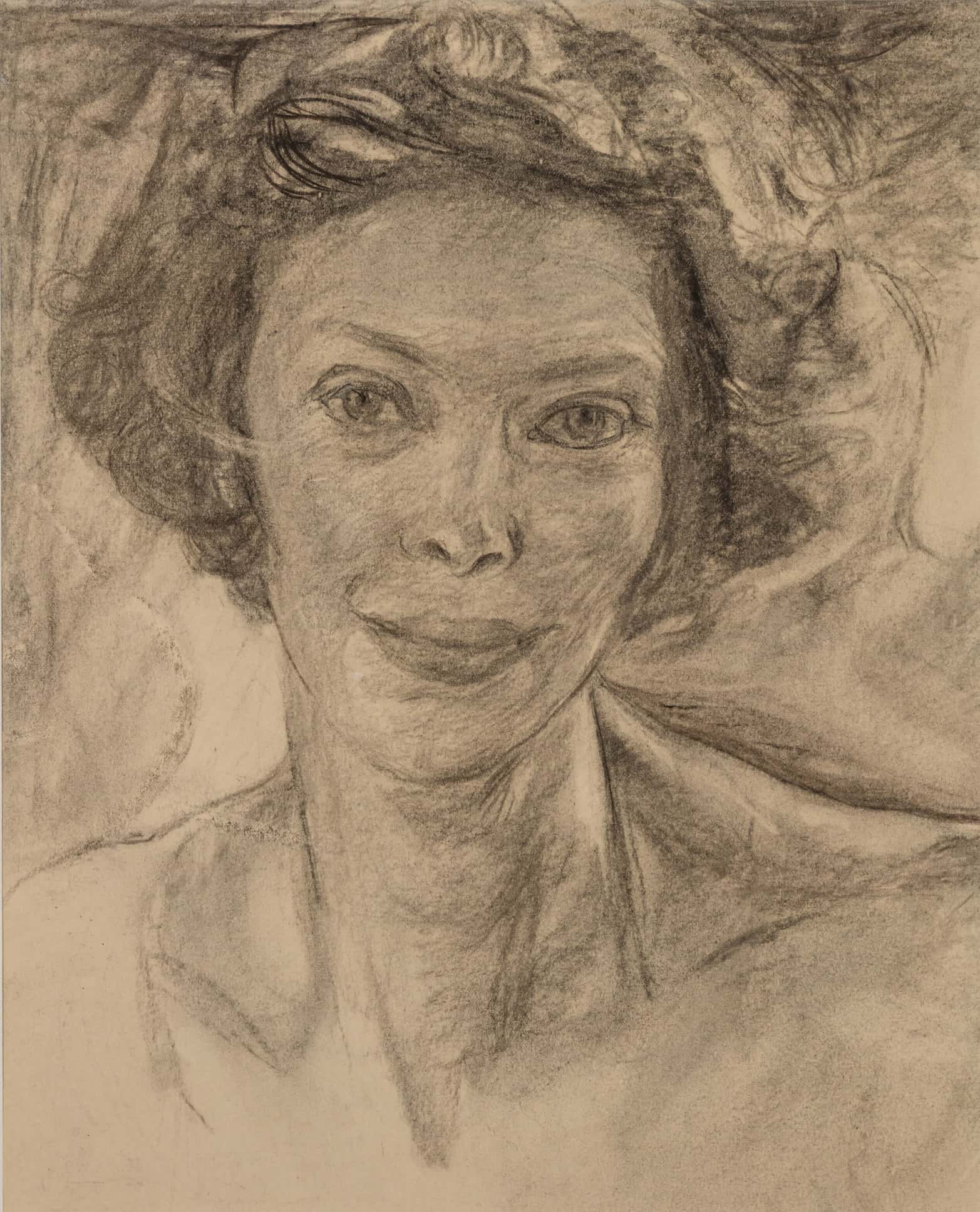
Kathleen Gormley McKay
There are several versions of how Frederick Varley first encountered Kathleen Gormley McKay (1899–1996). One report has her meeting the artist at the Roberts Gallery in Toronto; a second has her going to his studio to commission a portrait of her husband, Donald McKay. Katerina Atanassova, the author of the definitive book on Varley’s portraits, states that a third scenario is the most likely: the McKays already owned a work by Varley, and Kathy sought out the artist to acquire more. Apparently, the McKays had determined to create a collection of Canadian art, which they intended to donate eventually to the Art Gallery of Toronto (renamed the Art Gallery of Ontario in 1966). Atanassova pinpoints this first encounter to January 1951. Whatever the exact date, the meeting certainly changed the lives of all concerned.
Born in Sheffield, England, Frederick Horsman Varley (1881–1969) came to Canada in 1912. By 1920 he was a founding member of the Group of Seven, a group of painters renowned for their depictions of the Canadian landscape. Although he was a respected landscape artist and a noted colourist, Varley was the only Group of Seven member who described himself first and foremost as a portrait painter. F. H. Varley is now regarded as one of the greatest twentieth-century exponents of portraiture in Canada. Yet when he met Kathy McKay, Varley, the artist, then aged seventy-one, was somewhat the worse for wear. Many of his relationships with family and old friends were fraught; he had no steady source of income, and his artistic output was inconsistent. Varley initially set up a studio in the McKays’ large house at 129 Lowther Avenue in Toronto. During the winter of 1952 the artist became very ill, and he stayed with the McKays to recuperate. After he recovered, Varley continued to live with them, and in 1957 he moved with the couple to a house at 197 Main Street, Unionville. Built by an ancestor of Kathy’s in the 1850s, it had recently been purchased by the couple. Varley remained with the McKays until his death in 1969.
F. H. Varley, Head of Kathy, c. 1952-53, charcoal and graphite on paper, 38 cm x 32 cm. Collection of the Varley Art Gallery of Markham. Gift of the Estate of Kathleen Gormley McKay, 1996
Creating the Gallery
In the 1970s, following the deaths of both her husband, Donald, and Fred Varley, Kathy McKay moved back to downtown Toronto. From there she began to plan the creation of an art gallery to commemorate F. H. Varley, contacting her friend William Withrow, Director of the Art Gallery of Ontario, about how best to proceed. In 1978 Kathy sold her house in Unionville to the Town of Markham. After much negotiation, in 1988 she signed an agreement stating that she would leave her art and the residue of her estate to the town on condition that a suitable gallery be created to house the collection. Her will also stipulated that the gallery be designated under the Cultural Property Export and Import Act—thereby guaranteeing that its construction would meet the best professional gallery standards. William Withrow was one of four executors of the estate along with her accountant, Howard Back, her financial adviser, Stan Neal, and the collector and philanthropist Francis Redelmeier.
All four would be instrumental in bringing the gallery project to fruition.
The original building was designed by Markson, Borooah Hodgson Architects in 1994; construction began in 1995 and was largely complete by the end of 1996. All was in place in time for the official opening of the Frederick Horsman Varley Art Gallery of Markham on May 31, 1997. The inaugural exhibition was Varley: A Celebration, accompanied by a publication of the same name. Unfortunately, Kathy McKay did not live to see these grand events; she died approximately six months earlier, on December 2, 1996, at the age of ninety-seven.
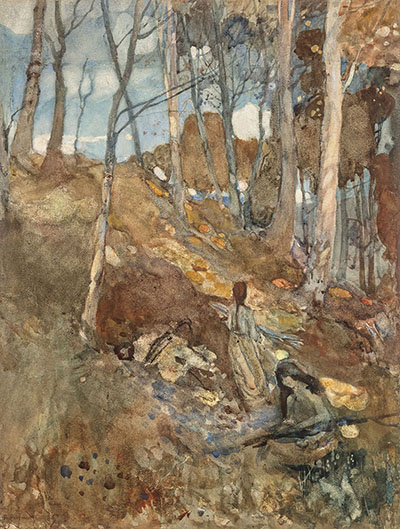
The Varley-McKay Art Foundation of Markham
Over the course of its over twenty-five years, the Varley Art Gallery has been fortunate to have many generous supporters who have built on the founding gift and assisted in growing the collections. Chief among these has been the Varley-McKay Art Foundation, which was created in 1992 to assist in realizing the gallery’s goals. In 2006 the foundation’s board became the advisory board for the gallery. The foundation fundraises on behalf of the gallery and manages the interest generated by the Kathleen McKay Endowment Fund. In accordance with Kathleen McKay’s will, the foundation directs these disbursements through two designated funds. One fund supports art acquisition, the second supports education and conservation.
Since 1998 the Varley-McKay Art Foundation has acquired some 50 works on behalf of the Varley Art Gallery. The first purchase was Varley’s Jess (c. 1949), a graphite and chalk portrait of Jess Crosby, his companion in the 1940s to early 1950s. The foundation has secured for the gallery a total of twelve works by Varley, including: The Hillside (c. 1912), Shelled Buildings, France (1919), Portrait of Alice Massey (c. 1924–25), Portrait of a Male (1925) and, most recently, Arctic Sketch no. 2 (1938). Foundation purchases of works by other Group of Seven artists include a drawing and a painting by Arthur Lismer (1885–1969); an oil on panel by A.Y. Jackson; and a large oil on canvas, Hills at Harrington, Quebec (1970) by A.J. Casson (1898–1992), who joined the Group of Seven in 1926.
F. H. Varley, The Hillside, c. 1912, watercolour with traces of charcoal on paper, 45.9 cm x 35.0 cm. Collection of the Varley Art Gallery of Markham. Purchased by the Varley-McKay Art Foundation of Markham, 2003.1.1
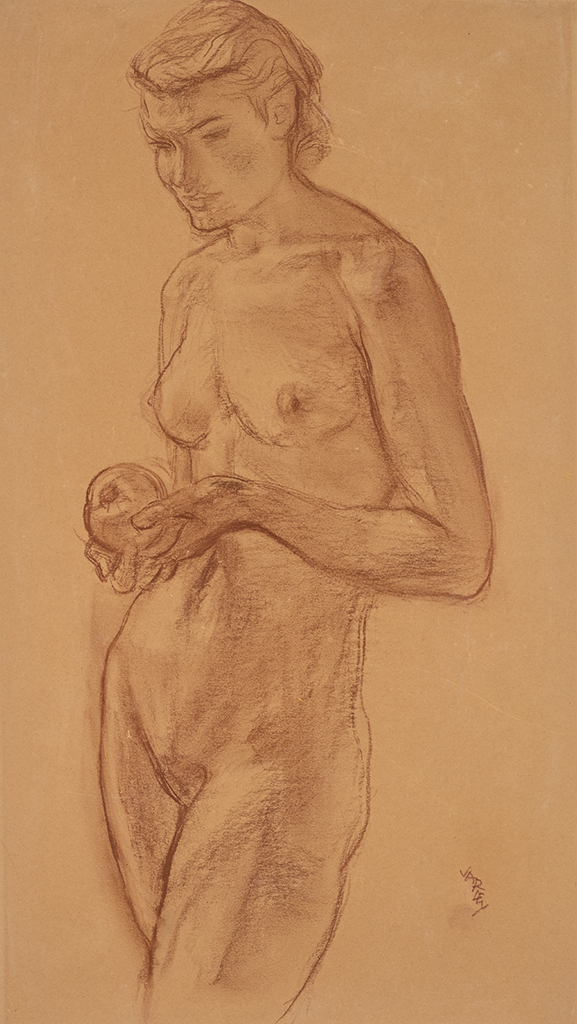
Major Donors
In 2005 the Varley Art Gallery received a second major gift, this time from Torontonian Wallace Joyce, who had been a friend of Kathy McKay. Mr. Joyce’s donation of $1.4 million permitted the construction of a new wing to house a gallery for the permanent collections and much-needed office space above. Completed in 2012, the Collections Gallery ensures that artworks by Varley are on display whenever the exhibition spaces are open to the public. This is to avoid disappointment by visitors who travel to the gallery specifically to see our namesake’s work. Wallace Joyce was also a significant contributor to the gallery’s collections: between 2003 and 2011, he donated and bequeathed a total of thirty-one works to the Varley Art Gallery. In 2004 he gifted two works by A.J. Casson and in 2005 two more by A.Y. Jackson. Among the final group of works from his estate in 2011 came two works by David Blackwood (b. 1941), two by Kathleen Daly (1898–1994), two by Doris McCarthy (1910–2010), and four works by Walter J. Phillips (1884–1963). The Varley holdings do not contain a great deal of sculpture. We were fortunate to acquire eight small bronzes by Sorel Etrog (1933–2014), along with over forty of his drawings and prints, all donated by the artist in 2003. That important gift was supplemented by five Etrog prints donated by William Withrow in 2005. The following year, 2006, saw a trio of excellent pieces donated by the Friends of Sylvia Alden Morley. Foremost among them is Varley’s Nude with Apple (1949).
Originating from the famous art collection of businessman and philanthropist Charles S. Band, a good friend of Varley, this nude has been recognized as his “finest drawing from the life model.” Equally exciting to receive from the same generous donors were David Milne’s famous colour drypoint Painting Place (1930–31) and a small Arthur Lismer oil on panel, Little Cedar (1948), in Lismer’s typically expressive and gestural later style.
In 2015 the Varley Art Gallery received two very fine Varley drawings from the Family of Johnny and Beatrice Wayne: the beautiful Portrait of Jess Crosby (c. 1948–52) and the often reproduced Head of a Woman (c. 1948–52). A wonderful selection of twenty-one drawings and prints by Inuit artist Pudlo Pudlat (1916–1992) was donated by Peter Milligan and Dorene MacAulay Milligan in 2016. They are an excellent complement to our acrylic and watercolour piece by Nunavut artist William Noah (b. 1943), purchased by the Varley-McKay Art Foundation in 2006, and our twelve Varley images of the Arctic, produced on his 1938 voyage through the eastern Arctic aboard the Nascopie supply ship. The Arctic images by Varley derive from the founding gift, from purchase by the Varley-McKay Art Foundation and from generous donation, notably two works formerly in the important Plaunt Family Collection: the radiant Sketch for Summer in the Arctic (1938), donated in 2012, and Arctic Sketch no. 1 (1938), received in 2017.
F. H. Varley, Nude with Apple, 1949, brown chalk on paper, 57.5 cm x 32.0 cm. Collection of the Varley Art Gallery of Markham, Gift from the friends of the late Sylvia Alden Morley, 2006.1.3.
The John J. (Jack) MacQuarrie Collection
In 2017 the Varley Art Gallery was particularly proud to be the recipient of twenty-two Group of Seven works from the John J. (Jack) MacQuarrie Collection. Collected from the late 1950s through the very early 1980s, the MacQuarrie donation features works by each of the seven founding members of the Group as well as by two of its later adherents. The collection is cohesive yet expresses the Group members’ diverse personalities and their range of interests from wilderness to domestic landscape and architecture to industry and commerce. Depicting the Maritimes, Quebec, Ontario, the Prairies, the Rockies, and the west coast, these works give a sense of the geographic span of their activities. Executed in diverse media and dating from 1912 through the Group’s heyday in the 1920s and 1930s to the 1960s, they offer a wonderfully comprehensive view of Group of Seven practice. Along with bringing us three new Varley pieces—two drawings and one painting, Landscape Composition (n.d.)—this gift provides the first representation of both Franklin Carmichael (1890–1945) and Lawren Harris (1885–1970) in our holdings—a perfect way to mark the gallery’s twentieth anniversary.
[1] Lawren Harris, Mountains, Jasper, n.d., oil on board, 27 cm x 35.3 cm. Collection of the Varley Art Gallery of Markham, Gift of J. [Jack] MacQuarrie, 2017.10 [2] From left to right: Gallery director Niamh O’Laoghaire, Jack MacQuarrie, and Mayor Frank Scarpitti.
AGO Transfer
In late 2020 Varley staff were very excited to receive some 474 works by F.H. Varley from the Art Gallery of Ontario (AGO). These works had been received by the AGO in a series of seven gifts made by Kathleen Gormley McKay between 1971 to 1994, with the bulk of the material gifted in 1976, 1977, and 1979, long before the Varley Art Gallery of Markham opened its doors in 1997. Following years of discussion and negotiation, the AGO generously transferred the works to the Varley Art Gallery of Markham, as the appropriate repository for objects that were under-utilized at the AGO. The transferred works are primarily pieces on paper, sketches, and drawings, and include a number of watercolour and oil sketches, as well as several sketchbooks. The majority are rapid observational sketches executed either on the street while people-watching or produced en plein air that is, out in nature. Some of the works are detailed, while others are quite minimally rendered. Together, they form a tremendous resource. They speak to F.H. Varley’s sketching practice over time and contribute to our understanding of his artistic development and career. Overnight the gallery’s holding of works by Varley increased to close to 600, while the collection as a whole almost doubled.
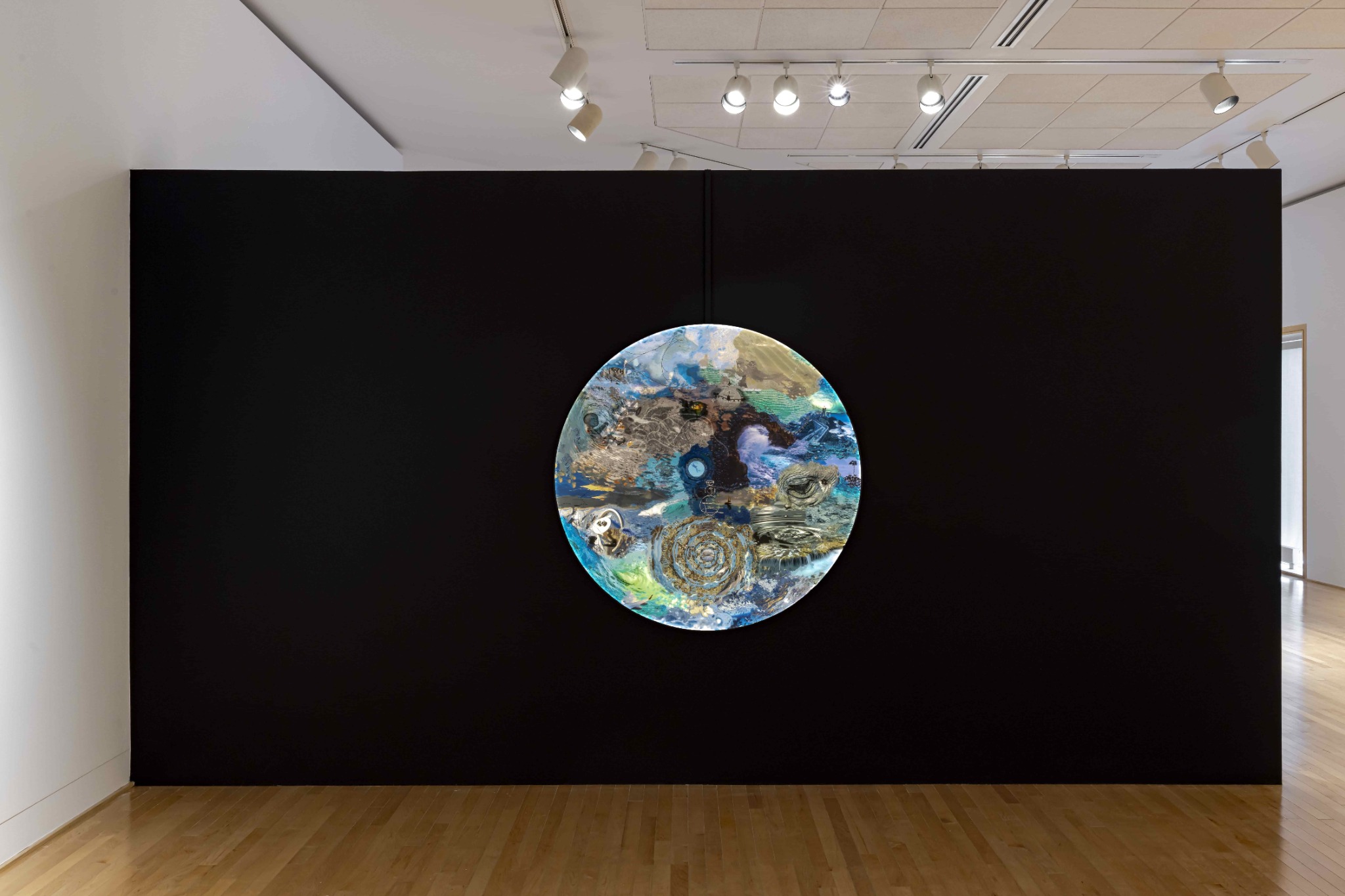
Evolving Acquisition Priorities
From the outset, the Varley Art Gallery has focused on works by Varley, his fellow members of the Group of Seven, and, in general, pieces by figures significant to the history of art in Canada. In recent years, the gallery has expanded its horizons, seeking to acquire works by contemporary artists in Canada, particularly those that link thematically to the existing permanent collections. Since 2010 we have striven to acquire contemporary works that have been shown at the Varley and particularly those by local and regional artists that have been created specifically for that purpose. In the wake of both the Report of the Truth and Reconciliation Commission and the anti-Black Racism movement Curator Anik Glaude executed a detailed survey of the collection which revealed, not surprisingly, that the holdings were made up of works created primarily by artists who are male (76.84%), white (82%) and deceased (72%). We immediately implemented a program to begin to address these imbalances. Focusing on Ontario artists, supplemented by artists practicing elsewhere in Canada, the gallery now pro-actively seeks to prioritize acquisitions by artists who are women, Black, culturally diverse, and Indigenous. In the past two years, for example, we have acquired our first works by a self-identified black Canadian artist, Anique Jordan, and by Canadian members of the Asian diaspora Xuan Ye and Lan Florence Yee. We are further complementing our many images of the Arctic created by F. H. Varley with the work of contemporary northern artists, Shuvinai Ashoona, Pitseolak Ashoona, and Annie Pootoogook. The Varley-McKay Art Foundation has continued to provide important and generous support for this new collecting direction.
Conclusion
Over the past twenty-five years, with the help of the Varley-McKay Art Foundation and numerous donors and the Art Gallery of Ontario, the Varley Art Gallery has been immensely successful in growing its permanent holdings. Varley collections have grown exponentially since 1997 and now number over 1,100. We anticipate that acquisition building over the next twenty-five years will continue to be responsive to the communities we serve and bring equal if not greater success.
Niamh O’Laoghaire, Director
